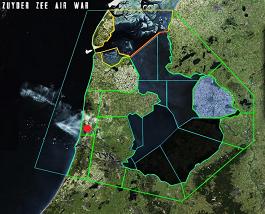
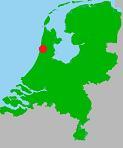
Relation with Lake (class): No. Other Cemetery in Area (OCA)
Total nr. of casualties buried here (TC): 40+ end WW2, today 36.
Lake casualties, initially, end WW2 (LC-I): 0
Unknown today: 17, all washed ashore.
of which unknown from Lake (LC-U): 0
of which unknown from North Sea (NS-U): 17
Initial burial site in WW2.
Post war burial site for collection and reburial from other sites: no.
Cemetery with Lake casualties today: no.
CASTRICUM PROTESTANT CHURCHYARD
Castricum ownes a vast dune area and a 5 km stretch of North Sea beach. Neighboring beach to the North belongs to village of Egmond aan Zee, which is part of the community of Bergen (aan Zee). To the South the beach is governed by Heemskerk. During WW2 the bodies of at least 40 Allied servicemen washed ashore on the Castricum coastline. They were buried on the yard of the local Protestant church. At least 2 were French or French Moroccan soldiers who lost their lives during the evacuation of Dunkirk May 26 - June 3th 1940. After WW2 the French (to Kapelle & France) and at least 2 American airmen were moved to Neuville-en-Condroz. Today CWGC 36 war graves remain at Castricum, 17 without name.
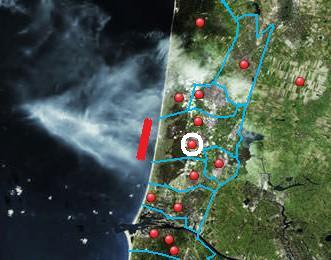
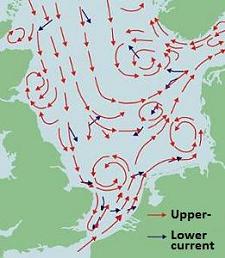
Dutch name cemetery: Begr. Pl. Hervormde Kerk.
Full name: Castricum Protestant Churchyard.
Address (usable for car navigation):
Dorpsstraat 72 or Schoolstraat 5, Castricum.
For reaction or comments; send us an email,
see address and info at CONTACT.
Please use as subject title 'Castricum'.
The midship of this church is from around year 1200, the tower and aft extension were build in 1520. It became Protestant some 50 years later. One of the Americans buried here was Lt. Edward F. Jefferis jr. He washed ashore 3 weeks after he was killed in a crash on the North Sea off IJmuiden (6 miles to the South-West). His aircraft came down on 17th May 1943: B-26 41-17979 Crew Lt. Col. Purinton, 322 BG. Today Lt. Jefferis is interred in US Cemetery "Ardennes" (Neuville). In Castricum a street is named after 2Lt. Richard W. Taylor. He was killed in a field nearby when his P-51 D Mustang crashed there on the 23rd of February 1945.
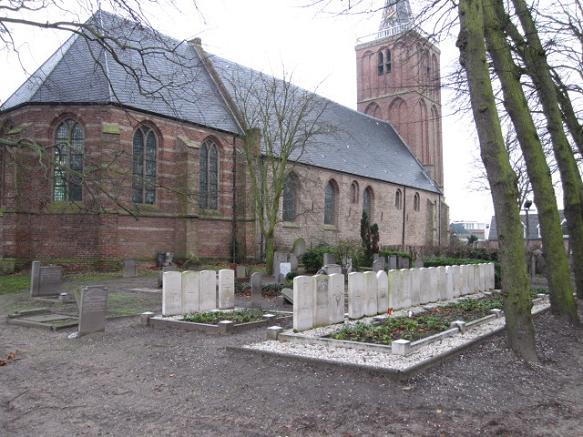
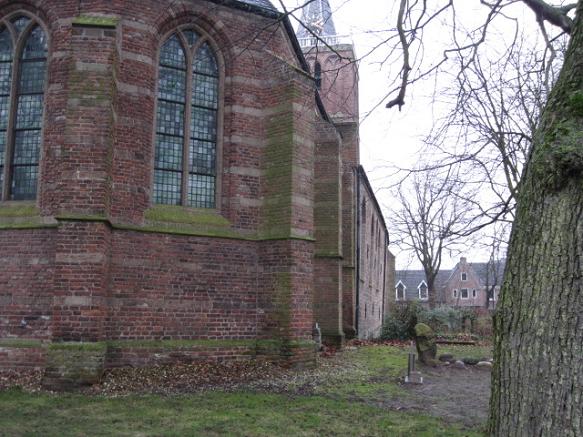
The graves are deep here. Each soldier received his own coffin, but due to lack of space on the yard, 3 coffins were put into one grave, stacked on top of each other. After the third final coffin came, a grave was closed (this could take months). In Holland this is very common practice. Each coffin received a Dutch grave number, as for example: 'grave 42, deep 3'. After the war the CWGC renumbered and renamed them. One coffin became a 'single grave'. Two coffins in a grave became a 'joint grave' and three coffins were named a 'collective grave'. Many people think that in a collective grave are small remains of three men that were put in one coffin after an explosion or crash. That is often true, but not here. Because there was no space enough to give each man his own headstone, most stones had to be engraved for 2 or even 3 persons. See under.
1 2 3a 3b 4 5a 5b 6a 6b 7a 7b 8a 8b 9 10 11a 11b 12a 12b 13 20a 20b 19a 19b

After the war (1946) some graves were opened for inspection by the American and English armed forces. This was a part of the process for identification of nameless victims. Found Americans were moved to their identification centre. Also the French army retrieved their casualties within a few years. Effects are visible today, there are a number of open spaces. Based on the dates on the stones, it appears that original position of the men in grave 20 was in grave 1, 2, 4 or 9. Please note that date on a stone of an identified man is his date of death (crash). The date on the stone of a victim 'Known to God', is the date of his washing ashore or burial date. The date of death in battle can lay weeks or months before.
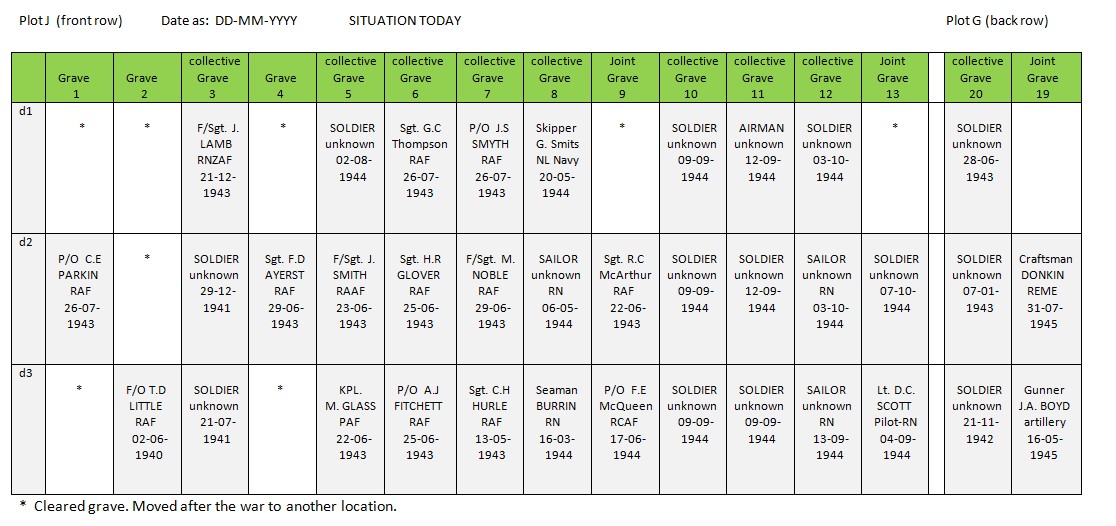
Airmen identified: 15. One of them is the Polish airman Kpl. M. Glass of PAF 300 sqn (his 5 crew members are MIA). Airmen unidentified: 1
Soldiers identified: 2 (Donkin & Boyd). Soldiers unidentified: 13
Sailors Royal Navy identified: 1 (Burrin). Sailors Royal Navy unidentified: 3
Sailor Royal Dutch Navy (in Allied service): 1 (Smits).
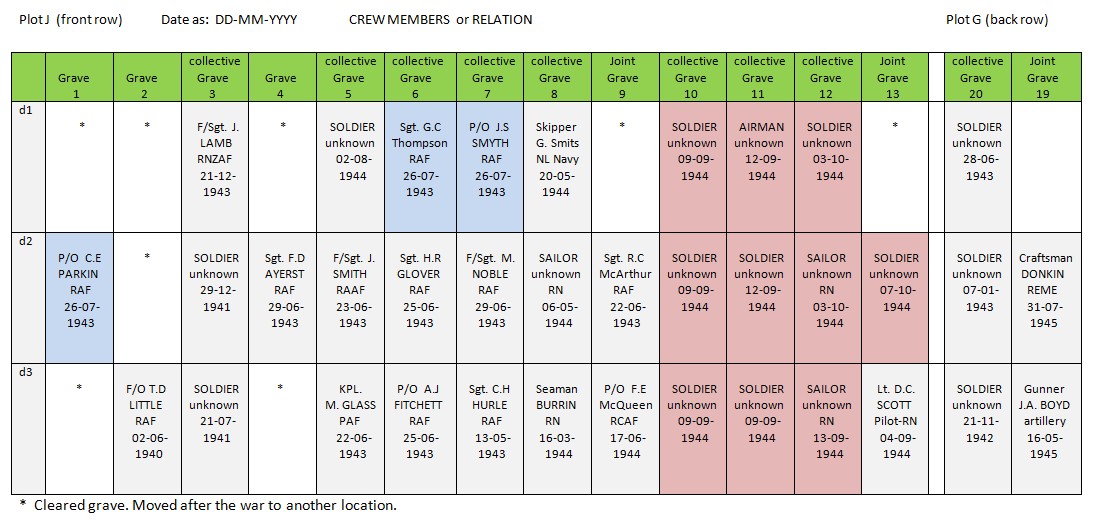
MTB (Motor Torpedo Boat) 417. Sunk off the coast of France after a sea battle on March 26 1944. Begin May 1944 five men washed ashore on the beach here. In Grave 8, 3 deep is the grave of Royal Navy Able Seaman Burrin of MTB 417. An unidentified Royal Navy sailor is above him in grave 8, 2 deep. Just north of here, in Bergen aan Zee washed ashore and were buried the other 3 sailors, 2 being identified as crew of MTB 417. The unidentied sailor is buried in between them.
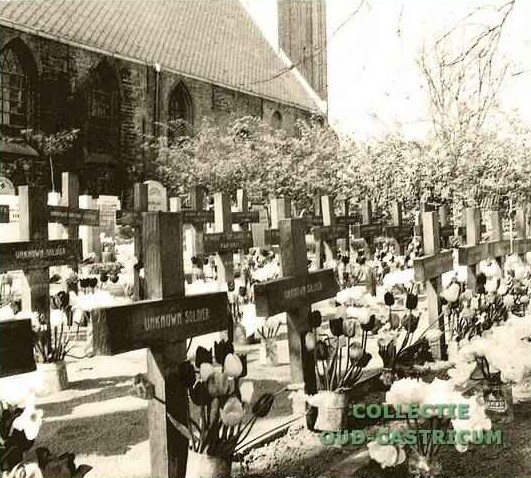
Photo of the site in 1947. Originally the wooden crosses were positioned over the length of the coffins: one cross at the head, one in the centre and one at the end over the 3 coffins stacked in the grave. The crosses with German text have been removed here, this photo shows the second version of grave marker now with English text. The tulips have been placed by inhabitants of Castricum. Photo is a copy of the image in the collection of the historical society Oud-Castricum.
Sources:
- www.B26.com
- own research on the wargrave-sites in our region
© zzairwar (Zuyder Zee Air War)
File 927. Castricum Prot. Churchyard Allied War Graves
- Details